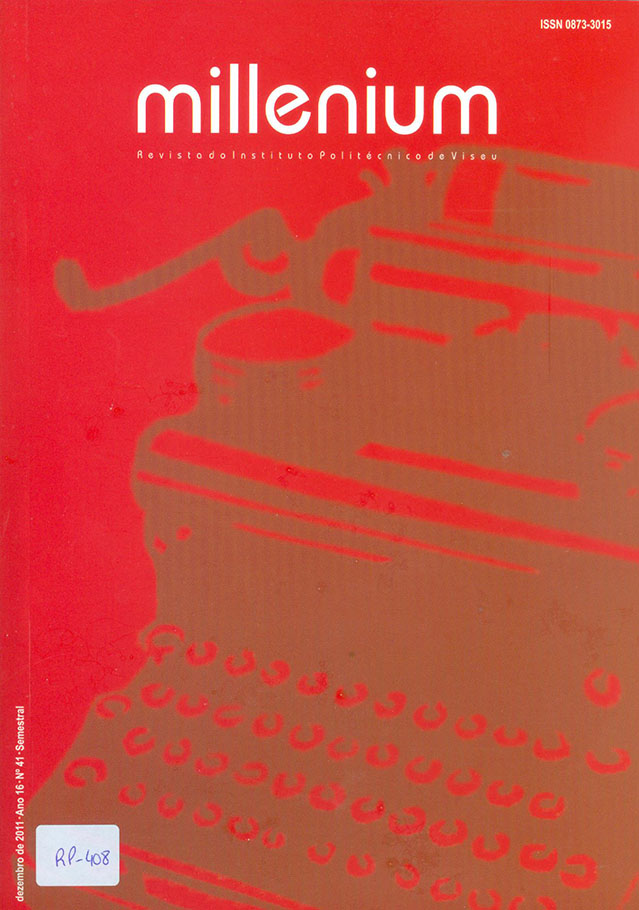Ferramentas Lógicas e Matemáticas Contemporâneas
Keywords:
Cálculo, Cálculo Paraconsistente, Análise Não-Standard, Lógica Paraconsistente, AplicabilidadeAbstract
Neste artigo apresentamos um panorama objetivo do surgimento e das características da Análise Não- Standard (ANS) de Abraham Robinson, da Lógica Paraconsistente e do Cálculo Diferencial Paraconsistente (CDP) de Newton Carneiro Affonso da Costa, entre outras considerações acerca das ferramentas lógicas e matemáticas contemporâneas.
Destacamos o CDP como um Cálculo ainda em construção, intimamente relacionado com teorias que preservam as mais importantes propriedades do Cálculo clássico e que, da mesma forma, apresenta inegáveis potencialidades para aplicações concretas. De facto, o Cálculo Paraconsistente estende o Cálculo tradicional e aproxima ideias presentes na Análise Infinitesimal de Newton e Leibniz e na Análise Não-Standard de Robinson, sob o uso da lógica paraconsistente e de teorias paraconsistentes de conjuntos (ver Batens et al., 2000; Robinson, 1996; da Costa, 1963, 1993; e D’Ottaviano, 1990).
Downloads
References
• Batens et al. (Eds.). (2000). Frontiers of Paraconsistent Logic (Studies in Logic and Computation),
Baldock: Research Studies Press.
• Baty, R. S. et al. (2007). Nonstandard Analysis and Shock Wave Jump Conditions. In: a One-Dimensional
Compressible Gas. Aeroacoustics Branch, NASA Langley Research Center, Hampton.
• Baty, R. S et al. (2008). Nonstandard Analysis and jump conditions for converging shock waves. J. Math.
Phys. (49).
• Bell, J. L. (2008). A Primer of Infinitesimal Analysis. (2ª ed.). Cambridge: Cambridge University Press.
• Bonesso, G. A. & Silva Filho, J. I. (2007). O simulador de Robôs com controle Lógico
Paraconsistente - Para - Sim. Revista Seleçao Documental: Inteligência Artificial e novas Tecnologias, (5),
(pp. 19-2) .
• Carvalho, T. F. (2004). Sobre o cálculo diferencial paraconsistente de da Costa. Instituto de Filosofia e
Ciências Humanas, Universidade Estadual de Campinas: Tese de Doutorado.
• Carvalho, T. F. & D’Ottaviano, I. M. L. (2006). Sobre Leibniz, Newton e infinitésimos, das origens do
cálculo infinitesimal aos fundamentos do cálculo diferencial paraconsistente. Educação matemática
pesquisa, (8) - n.º 1. Revista de Estudos pós-graduados da Pontifícia Universidade Católica de São Paulo.
• Church, A. A. (1974). Formulation of the simple theory of types. Journal of Symbolic Logic, (5),
(pp.56-68).
• Da Costa, N. C. A. (1963). Sistemas formais inconsistentes (Inconsistent formal systems). Tese –
Universidade Federal do Paraná, Curitiba.
• Da Costa, N. C. A. (1986). On paraconsistent set theory. Logique et Analyse, (115), (pp.361-371).
• Da Costa, N. C. A. (1993). Sistemas formais inconsistentes (Inconsistent formal systems). Curitiba: Editora
UFPR.
• Da Costa, N. C. A. (2000). Paraconsistent mathematics. In: I World Congress on Paraconsistency, 1998,
Ghent, Belgium. Frontiers in paraconsistent logic: proceedings. Edited by D. Batens, C. Mortensen, G.
Priest, J. P. van Bendegen. London: King’s College Publications, (pp. 165-179).
• Da Costa, N. C. A. et al. (1998). Elementos de teoria paraconsistente de conjuntos. Campinas: Unicamp /
CLE. (Coleção CLE, v. 23).
• Da Costa, N. C. A. & Abe, J. M. (2000). Paraconsistência em informática e inteligência artificial. Estud. av.,
v. 14, n.º 39, Aug. 2000, São Paulo.
Available from <http://www.scielo.br/scielo.php?script=sci_arttext&pid=S0103-
&lng=en&nrm=iso>. Access on 30 jan. 2011. http://dx.doi.org/10.1590/S0103-
• Da Costa, N. C. A. & French, S. (2003). Science and Partial Truth: a unitary approach to models and scientific reasoning. Oxford:
Oxford University Press.
• D’Ottaviano, I. M. L. (1990). On the development of paraconsistent logic and da Costa’s work. The Journal
of Non-Classical Logic, (7), (pp. 89-152).
• Henson, C. W. & Keisler, H. J. (1986). On the Strength of Nonstandard Analysis, The Journal of Symbolic
Logic, (51), n.º 2, (pp. 377-386).
• Hoyle, J. W. (2007). Infinitesimals in modern mathematics. Mathematical Association of America Seaway
Section Conference, Rochester, New York October (20).
• Keisler, H. J. (1976a). Elementary Calculus: An Approach Using Infinitesimals. Boston: Prindle, Weber &
Schmidt.
• Keisler, H. J. (1976b). Elementary Calculus: An Infinitesimal Approach. Boston: Prindle, Weber &
Schmidt.
• Kleene, S. C. (1952). Introduction to metamathematics. Amsterdam: North Holland; New York: Van
Nostrand.
• Mortensen, C. (1995). Inconsistent mathematics. Dortrecht: Kluwer Academic Publishers, Mathematics and
its Applications, (312).
• Nelson, E. (1976). Internal Set Theory: a new approach to non-Standard Analysis, Bulletin of American
Mathematical Society, (83), n.º 6.
• Palmgren, E. (1995). A constructive approach to nonstandard analysis. Ann. Pure and Appl. Logic (73), (pp.
-325).
• Robinson, A. (1996). Non-standard analysis. (Reviewed re-edition of the 1st edition of 1966). Princeton:
Princeton University Press.
• Robinson, A. & Zakon, E. (1967). A set theoretical characterization of enlargements. Applications of model
theory to algebra, analysis and probability. C.I.T, Holt, Rinehart, and Winston, (pp. 109-122).
• Silva Filho, J. I. (1999). Métodos de Aplicações da Lógica Paraconsistente Anotada de Anotação com dois
valores LPA2v com construção de Algoritmo e Implementação de Circuitos Eletrônicos. Tese de
Doutorado. EPUSP, São Paulo.
• Stroyan, K. D. & Luxemburg, W. A. J. (1976). Introduction to the theory of infinitesimals. New York:
Academic Press.
Downloads
Published
How to Cite
Issue
Section
License
Authors who submit proposals for this journal agree to the following terms:
a) Articles are published under the Licença Creative Commons (CC BY 4.0), in full open-access, without any cost or fees of any kind to the author or the reader;
b) The authors retain copyright and grant the journal right of first publication, allowing the free sharing of work, provided it is correctly attributed the authorship and initial publication in this journal;
c) The authors are permitted to take on additional contracts separately for non-exclusive distribution of the version of the work published in this journal (eg, post it to an institutional repository or as a book), with an acknowledgment of its initial publication in this journal;
d) Authors are permitted and encouraged to publish and distribute their work online (eg, in institutional repositories or on their website) as it can lead to productive exchanges, as well as increase the impact and citation of published work
Documents required for submission
Article template (Editable format)















